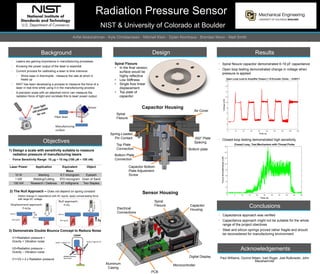Recommended
8th PVPMC Workshop, May 9-10 201711 presentation valentin_software_20170509

11 presentation valentin_software_20170509Sandia National Laboratories: Energy & Climate: Renewables
8th PVPMC Workshop, May 9-10 201708 kyumin lee (cfv) single-diode model with rs temperature dependence

08 kyumin lee (cfv) single-diode model with rs temperature dependenceSandia National Laboratories: Energy & Climate: Renewables
Recommended
8th PVPMC Workshop, May 9-10 201711 presentation valentin_software_20170509

11 presentation valentin_software_20170509Sandia National Laboratories: Energy & Climate: Renewables
8th PVPMC Workshop, May 9-10 201708 kyumin lee (cfv) single-diode model with rs temperature dependence

08 kyumin lee (cfv) single-diode model with rs temperature dependenceSandia National Laboratories: Energy & Climate: Renewables
8th PVPMC Workshop, May 9-10 201704 final - hobbs lave wvm solar portfolios - pvpmc

04 final - hobbs lave wvm solar portfolios - pvpmcSandia National Laboratories: Energy & Climate: Renewables
Impact of Spectral Irradiance on Energy Yield of PV Modules Measured in Different Climates26 schweiger impact_of_spectral_irradiance_on_energy_yield

26 schweiger impact_of_spectral_irradiance_on_energy_yieldSandia National Laboratories: Energy & Climate: Renewables
Spectral corrections for PV performance modelling24 mavromatakis vignola_spectral_corrections_for_pv_performance_modelling

24 mavromatakis vignola_spectral_corrections_for_pv_performance_modellingSandia National Laboratories: Energy & Climate: Renewables
More Related Content
What's hot
8th PVPMC Workshop, May 9-10 201704 final - hobbs lave wvm solar portfolios - pvpmc

04 final - hobbs lave wvm solar portfolios - pvpmcSandia National Laboratories: Energy & Climate: Renewables
Impact of Spectral Irradiance on Energy Yield of PV Modules Measured in Different Climates26 schweiger impact_of_spectral_irradiance_on_energy_yield

26 schweiger impact_of_spectral_irradiance_on_energy_yieldSandia National Laboratories: Energy & Climate: Renewables
Spectral corrections for PV performance modelling24 mavromatakis vignola_spectral_corrections_for_pv_performance_modelling

24 mavromatakis vignola_spectral_corrections_for_pv_performance_modellingSandia National Laboratories: Energy & Climate: Renewables
What's hot (20)
Inherent failure probabilities of isolated elements in prescriptive fire resi...

Inherent failure probabilities of isolated elements in prescriptive fire resi...
earthquake prediction use seismic electrical signal

earthquake prediction use seismic electrical signal
Simplify your data collection workflow - Em60G Webinar

Simplify your data collection workflow - Em60G Webinar
04 final - hobbs lave wvm solar portfolios - pvpmc

04 final - hobbs lave wvm solar portfolios - pvpmc
Stages/Process of Remote Sensing by Abdul Kader Muhammadi

Stages/Process of Remote Sensing by Abdul Kader Muhammadi
26 schweiger impact_of_spectral_irradiance_on_energy_yield

26 schweiger impact_of_spectral_irradiance_on_energy_yield
24 mavromatakis vignola_spectral_corrections_for_pv_performance_modelling

24 mavromatakis vignola_spectral_corrections_for_pv_performance_modelling
Similar to Poster_V7_DK
Calculation of ground rod resistance using measured data.Geotechnical information and its application to ground resistance calculations

Geotechnical information and its application to ground resistance calculationsDavid Nowicki, PE, P Eng.
Similar to Poster_V7_DK (20)
Study of AC Power Loss of High Frequency Gapped Inductors

Study of AC Power Loss of High Frequency Gapped Inductors
ICLR Friday Forum: A multfacted approach to hail losses (Dec 12)

ICLR Friday Forum: A multfacted approach to hail losses (Dec 12)
Eric MacDonald - 3D Printing of Multi-Functional Structures

Eric MacDonald - 3D Printing of Multi-Functional Structures
Geotechnical information and its application to ground resistance calculations

Geotechnical information and its application to ground resistance calculations
Nanoscale Based Digital VLSI Circuits (1) - NEHA PATEL.pptx.pdf

Nanoscale Based Digital VLSI Circuits (1) - NEHA PATEL.pptx.pdf
Poster_V7_DK
- 1. Radiation Pressure Sensor NIST & University of Colorado at Boulder Anfal Abdulrahman - Kyle Christianssen - Mitchell Klein - Dylan Klomhaus - Brendan Moon - Matt Smith Background • Lasers are gaining importance in manufacturing processes • Knowing the power output of the laser is essential • Current process for calibrating a laser is time intensive • Shine laser in thermopile - measure the rate at which it heats up • NIST has been developing a process to measure the force of a laser in real time while using it in the manufacturing process • A precision scale with an attached mirror can measure the radiation force of light and correlate this to laser power output. Objectives 1) Design a scale with sensitivity suitable to measure - radiation pressure of manufacturing lasers • Force Sensitivity Range: 10 mg – 10 mg (100 mN – 100 nN) 2) The Null Approach – Does not depend on spring constant • Detect change in capacitance with AC signal, apply compensating force with large DC voltage 3) Demonstrate Double Bounce Concept to Reduce Noise Design Results Conclusions • Capacitance approach was verified • Capacitance approach might not be suitable for the whole range of the project obectives • Steel and silicon springs proved rather fragile and should be reconsidered for manufacturing environment Acknowledgements Paul Williams, Oyvind Nilsen, Ivan Ryger, Joel Rutkowski, John Maushammer Laser Power Application Equivalent Mass Object 10 W Marking 6.7 microgram Eyelash 1 kW Welding/Cutting 670 microgram Grain of Sand 100 kW Research / Defense 67 milligrams Two Staples V1=Radiation pressure + Gravity + Vibration noise V2=Radiation pressure – Gravity – Vibration noise V1+V2 = 2 x Radiation pressure Results Spiral Flexure • In the final version, surface would be highly reflective • Low Stiffness • Single Axis linear displacement • Top plate of capacitor Spiral Flexure Air Cover Bottom plate Capacitor Housing Spring-Loaded Pin Contact Top Plate Connection Bottom Plate Connection Capacitor Bottom Plate Adjustment Screw Sensor Housing Capacitor Housing Digital Display PCB Aluminum Casing Electrical Connections Spiral Flexure Microcontroller .002” Plate Spacing • Spiral flexure capacitor demonstrated 6-19 pF capacitance • Open loop testing demonstrated change in voltage when pressure is applied • Closed-loop testing demonstrated high sensitivity
